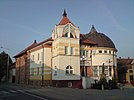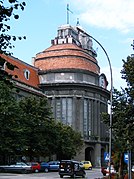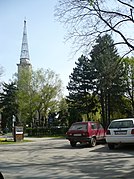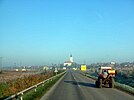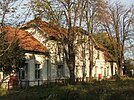North Banat District
North Banat District
Севернобанатски округ Severnobanatski okrug Észak-bánsági körzet | ||
|---|---|---|
District of Serbia | ||
|
Cities and municipalities- Municipalities 6 | | |
| Settlements | 50 | |
| - Cities and towns | 7 | |
| - Villages | 43 | |
| Website | www | |


The North Banat District (Serbian: Севернобанатски округ, romanized: Severnobanatski okrug, pronounced [sêʋeːrnobǎnaːtskiː ôkruːɡ]; Hungarian: Észak-bánsági körzet) is one of seven administrative districts of the autonomous province of Vojvodina, Serbia. It lies in the geographical regions of Banat and Bačka. According to the 2022 census, the district has a population of 117,896 inhabitants. The administrative center of the district is the city of Kikinda.
Administrative history
In the 9th century, the area was ruled by the
During
districts in the west. After 1860, it was again divided between Torontal, Batsch-Bodrog and Tschongrad counties.During the
During the
Since 1944, the area was part of autonomous
Municipalities
The North Banat District comprises the city of
- Kanjiža (Hungarian: Magyarkanizsa)
- Senta (Hungarian: Zenta)
- Ada (Hungarian: Ada)
- Čoka (Hungarian: Csóka)
- Novi Kneževac
Note: for municipalities with Hungarian ethnic majority, the names are also given in Hungarian.
An interesting fact is that the first three municipalities enlisted (Kanjiža, Senta and Ada) are geographically, in fact, in the Bačka region since the natural border between Banat and Bačka is the river Tisa.
Demographics
| Year | Pop. | ±% |
|---|---|---|
| 1948 | 189,050 | — |
| 1953 | 189,414 | +0.2% |
| 1961 | 194,150 | +2.5% |
| 1971 | 191,632 | −1.3% |
| 1981 | 187,179 | −2.3% |
| 1991 | 179,783 | −4.0% |
| 2002 | 165,881 | −7.7% |
| 2011 | 147,770 | −10.9% |
| 2021 | 119,147 | −19.4% |
| Source: [1] | ||
According to the last official census done in 2022, the North Banat District has 117,896 inhabitants.
Ethnic groups
With the results of 2011 census Hungarians were the largest ethnic group in the district at 46.64%, closely followed by Serbs at 42.67%. Municipalities with Serb ethnic majority are Kikinda (75.43%) and Novi Kneževac (57.19%), while municipalities with Hungarian ethnic majority are: Čoka (49.66%), Ada (75.03%), Senta (79.09%) and Kanjiža (85.13%). As for local communities, 29 have Hungarian majority, 19 have Serb majority, and 2 are ethnically mixed, with Hungarian relative majority.
The results of 2022 registered the serbs as the largest ethic group with 44% of population followed by hungarians with 43% of district population.
The ethnic composition of the district (as of 2011 and 2022 censuses):
| Ethnic group | Census 2011[2] | Census 2022[3] | ||
|---|---|---|---|---|
| Population | % | Population | % | |
| Serbs | 63,047 | 42.7 | 51,848 | 44.0 |
| Hungarians | 68,915 | 46.6 | 50,643 | 43.0 |
| Roma | 4,769 | 3.23 | 4,277 | 3.63 |
| Yugoslavs | 665 | 0.45 | 635 | 0.54 |
| Croats | 530 | 0.36 | 290 | 0.25 |
| Albanians | 264 | 0.18 | 157 | 0.13 |
| Montenegrins | 247 | 0.17 | 134 | 0.11 |
| Macedonians | 198 | 0.13 | 129 | 0.11 |
Slovaks |
207 | 0.14 | 128 | 0.11 |
Romanians |
421 | 0.28 | 121 | 0.11 |
ethnic Muslims |
135 | 0.09 | 90 | 0.08 |
| Germans | 137 | 0.09 | 80 | 0.07 |
| Others | 8,235 | 5.57 | 6,842 | 5.80 |
| Total | 147,770 | 117,896 | ||
Culture
The first modern Serb printing-house was founded in Kikinda in 1878, to be followed a year later by the opening of the first library.
This city is also reputable for its painters, including
Kikinda was the scene of the region's first theatrical performance, given in German, in 1796.
See also
- Administrative divisions of Serbia
- Districts of Serbia
- District of Velika Kikinda
References
- ^ "2011 Census of Population, Households and Dwellings in the Republic of Serbia" (PDF). stat.gov.rs. Statistical Office of the Republic of Serbia. Retrieved 16 January 2017.
- ^ https://publikacije.stat.gov.rs/G2013/PdfE/G20134002.pdf
- ^ https://publikacije.stat.gov.rs/G2023/PdfE/G20234001.pdf
Note: All official material made by Government of Serbia is public by law. Information was taken from official website.


